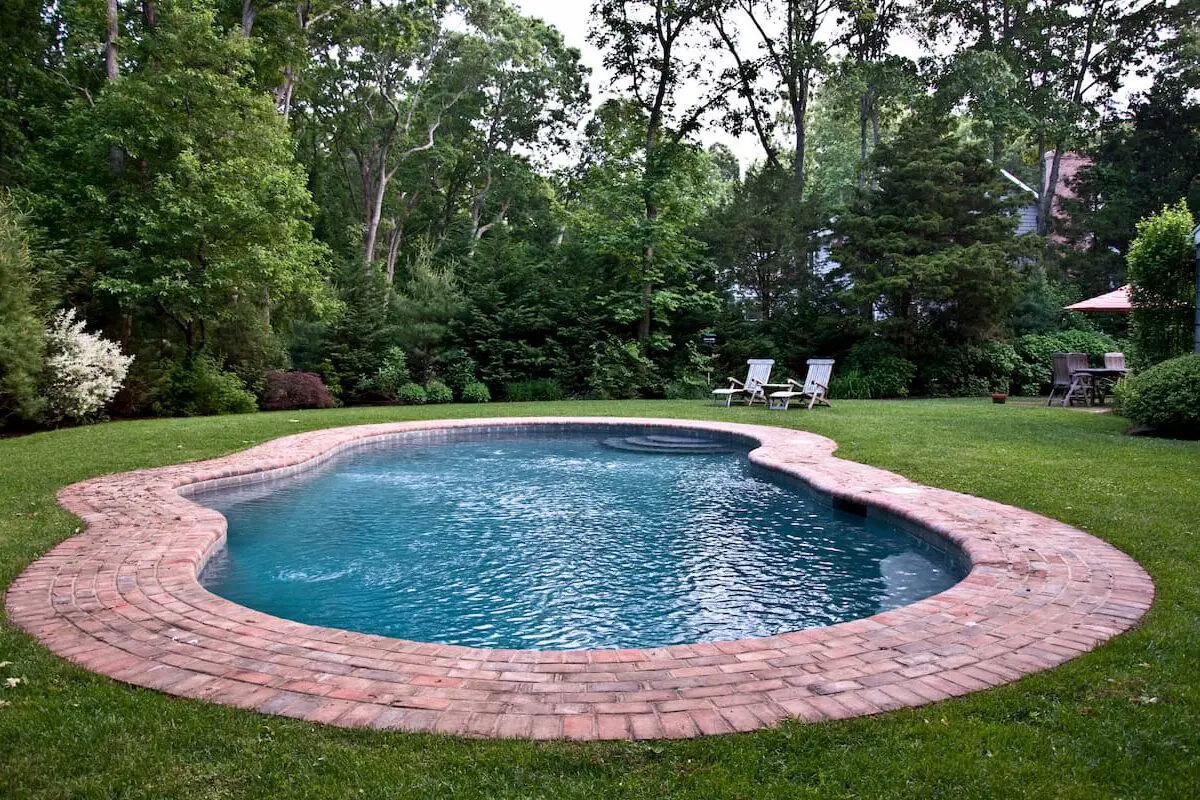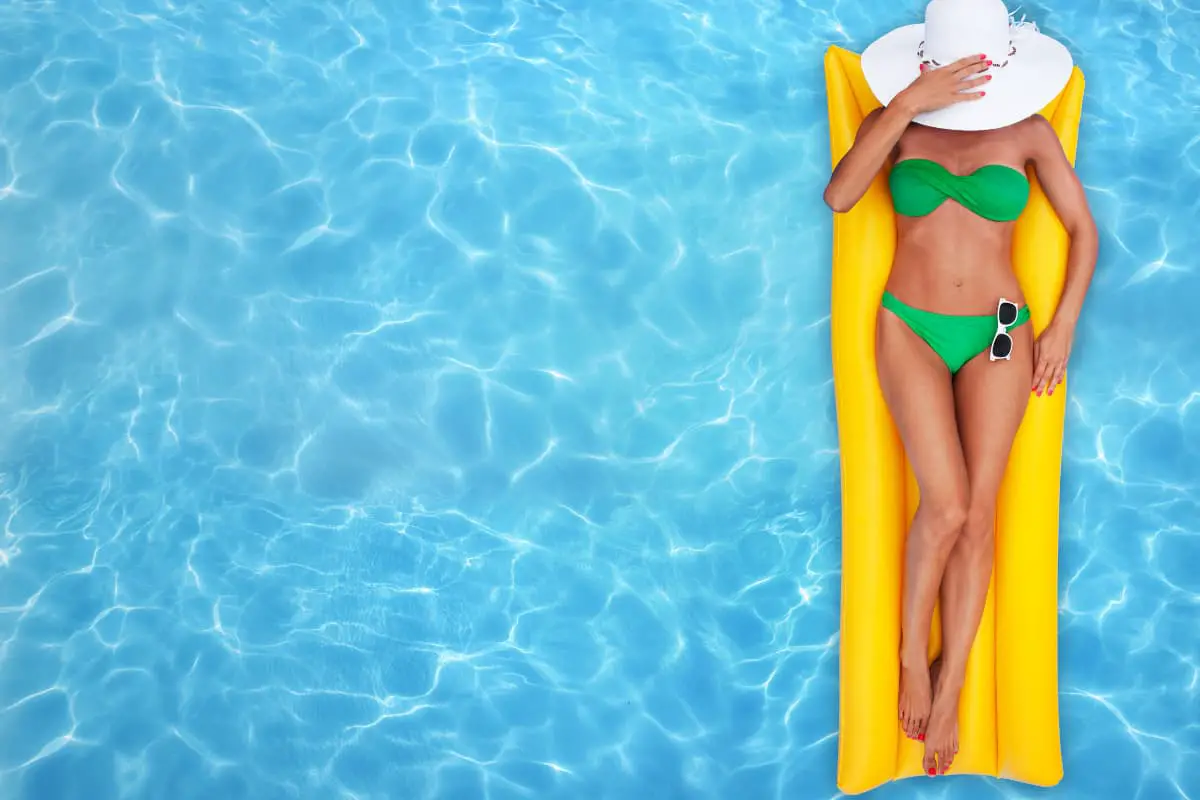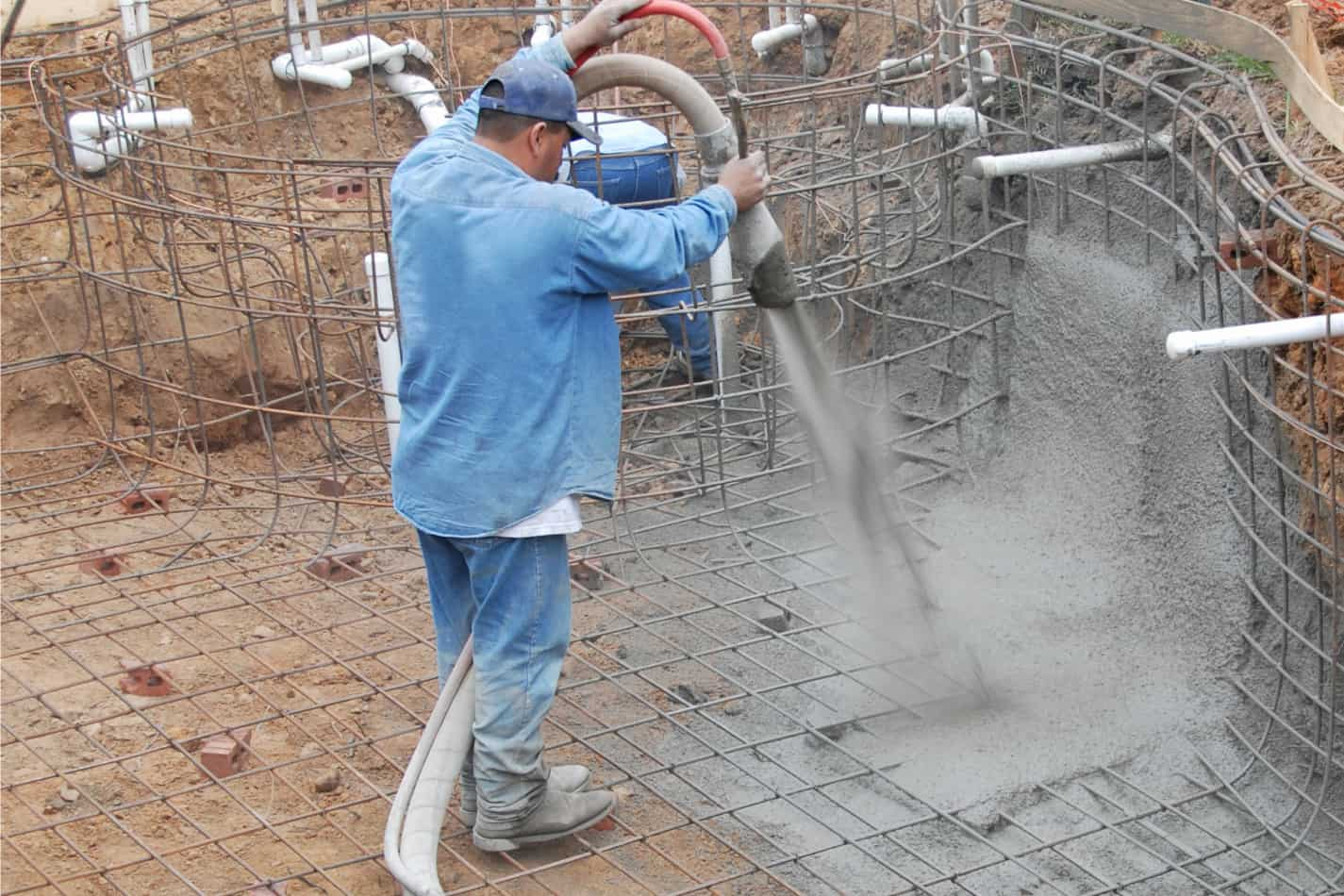Dive into Luxury: Budgeting for Inground Pool Installation Costs

As an Amazon Associate I earn from qualifying purchases.
Are you considering installing an inground pool in your backyard? Before diving in, it’s important to understand the costs involved in such a project.
The cost of installing an inground pool can vary greatly depending on various factors including pool size and shape, materials used, and the complexity of the installation process.
In this article, we’ll explore the different factors that impact the cost of installing an inground pool. We’ll also provide cost-saving tips and discuss long-term cost considerations so that you can make an informed decision about whether an inground pool is right for you and your budget.
So, whether you’re dreaming of a backyard oasis for relaxing and entertaining or looking to increase the value of your home, understanding the cost of an inground pool is the first step toward making that dream a reality.

Factors that Impact Inground Pool Cost
You’ll want to keep in mind that there are several things that can affect how much you’ll end up spending on your dream swimming spot. The inground pool design you choose will play a large role in the final cost. If you want a custom design with unique features, expect to pay more.
Additionally, the installation timeline can impact the cost. If you need the pool installed quickly, you may have to pay more for expedited service. Another factor to consider is the landscaping options you want around the pool. If you want elaborate hardscaping or extensive landscaping, this will add to the cost.
In addition, lighting features and heating systems will also increase the cost. These options can add convenience and luxury to your pool experience, but they do come at a price. As you begin planning your pool, keep in mind all of these factors that can impact the final cost.
Now, let’s talk about how the size and shape of the pool can further impact the price.
Pool Size and Shape
The size and shape you choose for your inground pool will greatly impact the final cost. When it comes to pool size, the deeper the pool, the more expensive it’ll be because it requires more excavation and additional materials for support.
The shape of your pool can also affect the cost. Custom shapes and designs will cost more than a traditional rectangular shape, but they can add a unique touch to your backyard oasis. In addition to the pool itself, you’ll also need to consider other design options.
These options can include water features like fountains or slides, lighting, and landscaping integration. The installation timeline will also be impacted by the size and shape of your pool. Larger and more complex designs will take longer to install.
You’ll also need to obtain the necessary permits and adhere to local regulations, which can add to the overall cost. With all of these factors in mind, it’s important to carefully consider your pool size and shape to ensure you’re getting the most value for your investment.
Moving onto the next section about materials used for construction, the type of material you choose will also impact the final cost.
Materials Used for Construction
Are you considering building your dream backyard oasis? The type of material you choose for construction will greatly impact the overall look and feel of your pool.
Pool construction materials vary in terms of durability factors, design considerations, environmental impact, and cost effectiveness. Here are some of the most common materials used for building inground pools:
- Concrete: This is the most popular material for inground pools due to its durability and versatility. It can be molded into any shape or size, and can be customized with different finishes such as tiles or paint. However, concrete pools require more maintenance and can be more expensive to build.
- Fiberglass: This is a pre-fabricated pool shell that is installed into the ground and then backfilled with dirt. Fiberglass pools are relatively low maintenance and have a smooth surface that is gentle on skin. However, they are limited in terms of design options.
- Vinyl: This is a flexible liner that is installed over a steel or aluminum frame. Vinyl pools are cost-effective and have a smooth surface that is easy to clean. However, the liner will need to be replaced every 10-15 years.
- Natural: These are pools that are constructed using natural materials such as stone or rock. They blend seamlessly into the environment and are environmentally friendly. However, they can be more expensive and require more maintenance than other materials.
Choosing the right material for your pool is an important decision that will impact the overall cost, durability, and aesthetic of your backyard oasis. Once you’ve selected the material, the next step is to consider the complexity of the installation process.
Complexity of Installation Process
Deciding on the material for your dream backyard oasis is just the first step, but the installation process for each option varies in complexity.
The installation timeline for an inground pool can range from a few weeks to several months depending on the complexity of the design and the materials used. Various permit requirements and safety regulations must also be adhered to during the installation process, which can add to the timeline.
Landscaping options and lighting features are also important factors to consider during the installation process. The placement of the pool in relation to existing landscaping and the addition of new landscaping can greatly impact the overall look and feel of your backyard oasis. Lighting features, such as underwater LED lights or landscape lighting, can enhance the ambiance of your pool area and extend the use of your pool into the evening hours.
As you move into the next section about excavation and site preparation, keep in mind that these steps are crucial to ensuring a smooth and successful installation process.
Excavation and Site Preparation
Before you can start transforming your backyard into an oasis, you’ll need to roll up your sleeves and get to work on preparing the site for your dream pool.
Site excavation is the first step in the process. You’ll need to hire a contractor to dig out the area where you want to install your pool. This can be a time-consuming and expensive process, but it’s crucial to ensure that your pool is level and stable.
Once the excavation is complete, your contractor will conduct soil testing to determine the type of soil in your yard. This will help them to determine the drainage considerations that need to be taken into account during the installation process.
You may also want to consider landscaping options around your pool to create a beautiful outdoor space.
Finally, the location of your pool is important to consider. You’ll want to choose a spot that receives plenty of sunlight and is easily accessible from your home. With these factors in mind, you’ll be well on your way to creating the perfect pool oasis.
When it comes to additional features and accessories for your pool, there are a variety of options available. From waterfalls to lighting to diving boards, the choices are endless. But before you start adding on all the bells and whistles, make sure that the basic installation is complete and that your pool is up and running smoothly.
Additional Features and Accessories
Adding extra features and accessories to your backyard oasis can truly take your inground pool to the next level. For example, pool lighting can create a beautiful and relaxing atmosphere for evening swims or late night gatherings. Water features such as waterfalls or jets can provide a calming sound and add visual interest to your pool area. Additionally, pool covers can help keep debris out of your pool and make maintenance easier. Heating options, such as a solar heater or gas heater, can extend your swimming season and allow you to enjoy your pool for more months out of the year. Lastly, incorporating landscaping ideas like adding plants or a rock waterfall can create a natural and inviting environment.
As you consider adding these extra features and accessories to your inground pool, it’s important to keep in mind that they will add to the overall cost of installation. However, many homeowners find the investment to be worth it as it can increase the value of their home and provide years of enjoyment.
Additionally, it’s important to factor in maintenance and repair costs for these extra features in the long run. Speaking of maintenance and repair costs, let’s take a look at what you can expect for ongoing upkeep of your inground pool.
Maintenance and Repair Costs
Now that you’ve added all the features and accessories you want to your inground pool, it’s time to consider the ongoing maintenance and repair costs. Don’t worry, maintaining your pool doesn’t have to be daunting. With a few maintenance tips, you can keep your pool in top shape and avoid costly repairs down the road.
One important aspect of pool maintenance is managing water chemistry. Properly balanced water chemistry promotes a healthy swimming environment and can prevent corrosion and damage to your pool equipment. Additionally, investing in energy-efficient equipment and pool covers can help reduce your monthly utility bills and prolong the life of your pool.
Keep in mind that seasonal maintenance, such as winterizing your pool, will also be necessary to protect your investment. By staying on top of maintenance, you can ensure that your pool remains a source of enjoyment for years to come.
As you consider the ongoing maintenance and repair costs of your inground pool, it’s also important to choose a reputable pool contractor who can provide quality service.
Choosing a Pool Contractor
When it comes to choosing a pool contractor, you want to make sure you’re working with someone who understands your vision and can bring it to life, leaving you feeling excited and confident about your investment.
To ensure you find the right contractor for your inground pool, consider the following:
- Pool Designs: Look for a contractor who offers a variety of pool designs to choose from or can create a custom design that meets your specific needs and preferences.
- Contractor Qualifications: Check the contractor’s qualifications, such as their license, insurance, and experience in the industry, to ensure they have the necessary expertise to build your pool safely and efficiently.
- Customer Reviews: Read customer reviews and testimonials to gain insight into the contractor’s reputation and quality of work.
Additionally, discuss the project timeline and payment options with the contractor before making a final decision. Once you find the right contractor, you can move on to exploring financing options for your inground pool.
Financing Options for Inground Pools
If you’re dreaming of a backyard oasis but don’t have the funds upfront, don’t worry – there are several financing options available to help you make your inground pool a reality. Pool financing is a popular choice for homeowners who want to spread out the cost of their pool over time. Payment plans are typically offered by pool contractors or pool financing companies, and they can range from a few months to several years.
Loan options are also available for pool financing. These loans can be obtained through banks, credit unions, or online lenders. Some lenders may require a certain credit score to qualify for the loan, so it’s important to check your credit score beforehand. Interest rates for pool loans can vary depending on the lender and your credit score, but they are usually lower than credit card interest rates. To give you an idea of the different financing options available, here’s a table outlining some popular payment plans and loan options for inground pool financing:
| Financing Option | Description | Interest Rate |
|---|---|---|
| Payment Plan | Offered by pool contractors or pool financing companies | Varies |
| Home Equity Loan | Borrow against the equity in your home | 3-6% |
| Personal Loan | Unsecured loan from a bank or credit union | 5-20% |
| Credit Card | Use a credit card to pay for your pool | 20-30% |
Now that you have an idea of the different pool financing options available, it’s important to consider your budget and financial situation before making a decision. Keep in mind that while financing can help make your inground pool a reality, it’s important to factor in the cost of interest and monthly payments. If you’re considering DIY installation to save money, read on to learn more about the pros and cons compared to professional installation.
DIY vs. Professional Installation
Are you debating between tackling your dream pool installation yourself or leaving it to the pros? Let’s explore the benefits and drawbacks of DIY vs. professional installation.
While DIY installation might seem like a cost-effective option, it comes with its own set of challenges. First, you need to have the necessary skills and knowledge to properly install the pool, which can be time-consuming to learn. Additionally, you’ll need to purchase or rent specialized equipment and tools, which can quickly add up in cost. Lastly, you may run into safety concerns if you don’t have experience with pool installation, potentially causing harm to yourself or others.
On the other hand, professional installation comes with its own set of benefits. Not only do you have the assurance that the pool will be installed correctly, but professionals are also well-versed in the legal requirements for pool installation, ensuring that your pool meets all necessary safety regulations. Additionally, professionals have access to specialized equipment and tools, saving you the cost of purchasing or renting them yourself.
While the upfront cost of professional installation may be higher than DIY, it may ultimately save you money in the long run by avoiding costly mistakes and ensuring that your pool is installed safely and correctly.
Looking for cost-saving tips for inground pool installation? Consider the following options.
Cost-Saving Tips for Inground Pool Installation
Looking to save money on your dream swimming oasis? Check out these tips to keep your budget in check while still achieving the backyard paradise you’ve always wanted.
Firstly, consider DIY options for your pool installation. If you have experience with construction and are willing to put in the time and effort, you could save thousands of dollars by doing the installation yourself. There are many resources available online and at home improvement stores to help guide you through the process.
Secondly, look into energy efficient options for your pool. This can not only save you money on your monthly utility bills, but also reduce your carbon footprint. Consider installing a variable speed pool pump and using a solar pool cover to help retain heat. Additionally, creative landscaping can be a budget-friendly way to enhance the aesthetics of your pool area without breaking the bank. Incorporating low-maintenance plants and hardscaping features can add dimension and interest to your space.
Lastly, consider alternative pool materials such as fiberglass or vinyl liner pools, which can be more cost-effective than traditional concrete. By thinking outside the box and exploring all of your options, you can create a stunning inground pool that fits within your budget. However, keep in mind that while these cost-saving tips may help in the short-term, it’s important to also consider long-term cost considerations for your inground pool.
Long-Term Cost Considerations for Inground Pools
To ensure the longevity and financial sustainability of your backyard oasis, it’s imperative that you take into account the long-term expenses associated with maintenance and repairs of your pool.
One of the most important factors to consider is energy efficiency. Opting for energy-efficient pool equipment and lighting can significantly reduce your electricity bill in the long run.
Additionally, consider landscaping options that can provide shade and windbreaks to help regulate the temperature of your pool, reducing the need for heating and cooling.
Another crucial aspect to consider is insurance coverage. Make sure your pool is adequately insured in case of accidents or damages. This may require an additional premium, but it can save you from significant out-of-pocket expenses in case of an incident.
Furthermore, keep climate considerations in mind. If you live in an area with harsh winters, you may need to invest in pool covers and heaters to protect your pool during the colder months.
Finally, remember that a well-maintained pool can add value to your property. Regular maintenance and repairs can extend the life of your pool, ensuring that it remains an asset to your home for years to come.
Conclusion
Congratulations on making the decision to install an inground pool! While the cost may seem daunting, there are several factors that can impact the final price.
These factors include pool size and shape, materials used for construction, and the complexity of the installation process. Additionally, the excavation and site preparation can also affect the overall cost.
You may also want to consider financing options for your inground pool, as well as whether to opt for DIY or professional installation. With some cost-saving tips and long-term cost considerations in mind, you can create a beautiful and enjoyable outdoor space that will provide years of fun and relaxation for you and your loved ones.
So go ahead and take the plunge – your dream of having your own personal oasis is within reach!



